What is a Vacuum Diode ?
What is a Vacuum Diode ?
Vacuum Diode Definition
A vacuum diode is a type of electronic device that controls the flow of electric current in a high vacuum between two electrodes: a cathode and an anode. The cathode is a metal cylinder coated with a material that emits electrons when heated, while the anode is a hollow metal cylinder that collects electrons from the cathode. The vacuum diode symbol is shown below.
The vacuum diode was invented by Sir John Ambrose Fleming in 1904 and was also known as the Fleming valve or the thermionic valve. It was the first vacuum tube and the precursor of other vacuum tube devices, such as triodes, tetrodes, and pentodes, that were widely used in electronics for the first half of the 20th century. Vacuum diodes were essential for the development of radio, television, radar, sound recording and reproduction, long-distance telephone networks, and analog and early digital computers.
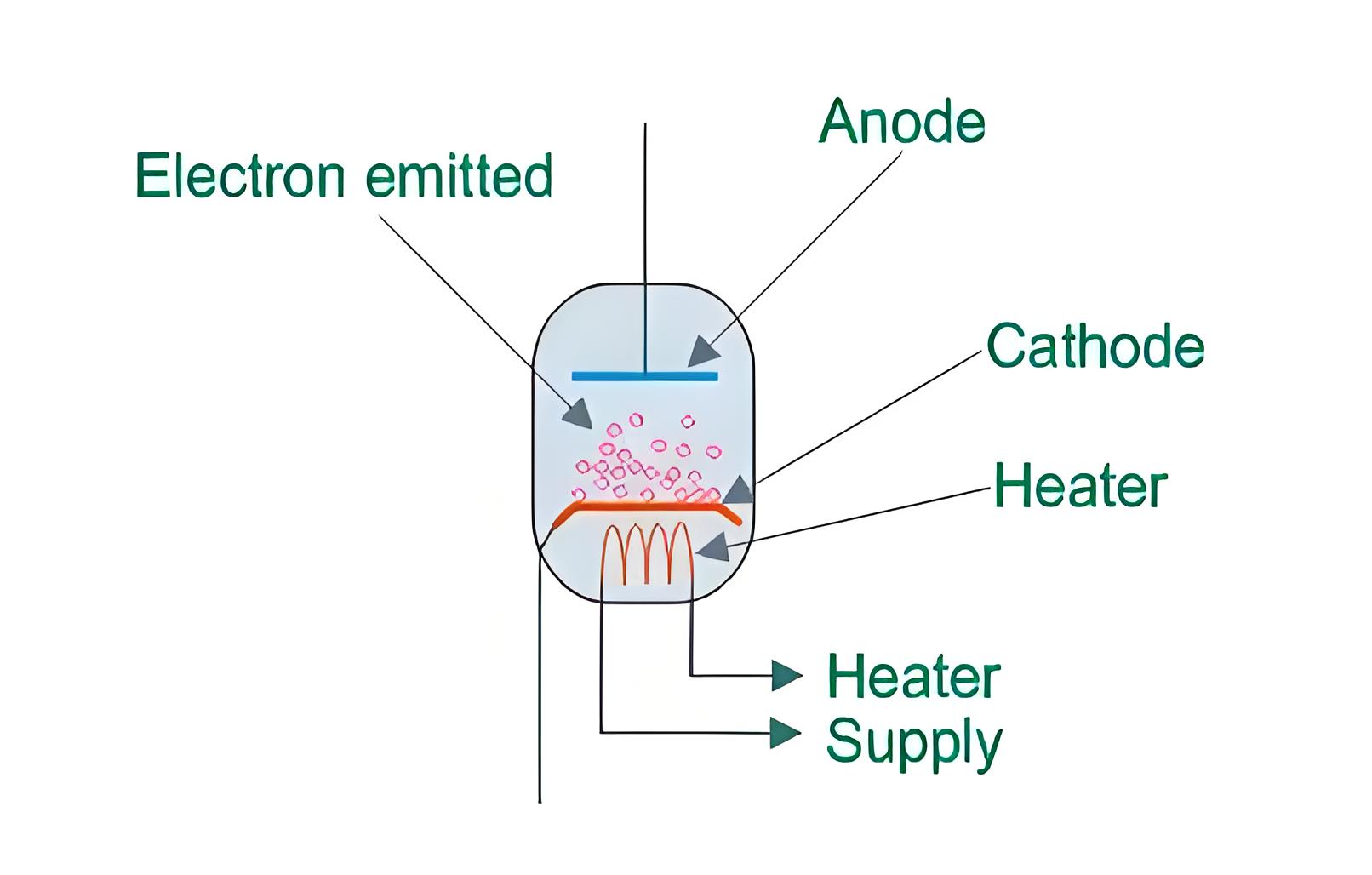
Principle of Operation
The vacuum diode operates on the principle of thermionic emission, where electrons are emitted from a heated metal surface. When the cathode is heated, electrons escape into the vacuum. A positive voltage on the anode attracts these electrons, allowing current to flow from the cathode to the anode in one direction.
However, if the positive voltage applied to the anode is not sufficient enough, the anode cannot attract all the electrons emitted from the cathode due to the hot filament. As a result, some electrons accumulate in the space between the cathode and the anode, forming a cloud of negative charge called space charge. The space charge acts as a barrier that prevents further emission of electrons from the cathode and reduces the current flow in the circuit.
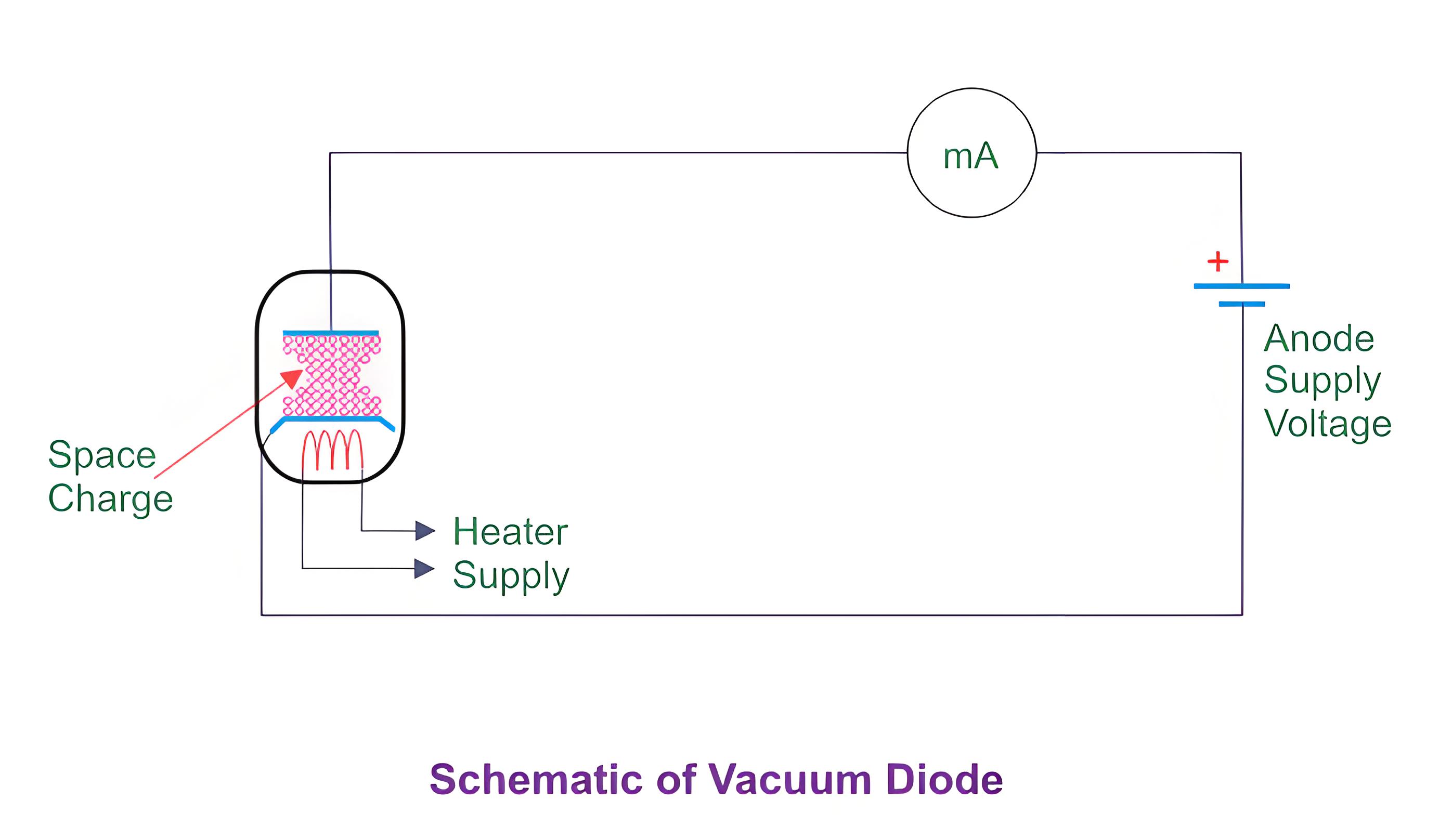
If the applied voltage between the anode and the cathode is gradually increased, more and more space charge electrons are drawn to the anode and create vacant space for further emitted electrons. So with the increase of voltage across the anode and cathode, we can increase the emission rate of electrons and hence the current flow in the circuit.
At some point, when all the space charge is neutralized by the anode voltage, there is no more obstruction for electron emission from the cathode. Then a beam of electrons starts flowing freely from the cathode to the anode through space. As a result, current flows from the anode to the cathode at its maximum value, which depends only on the temperature of the cathode. This is called saturation current.
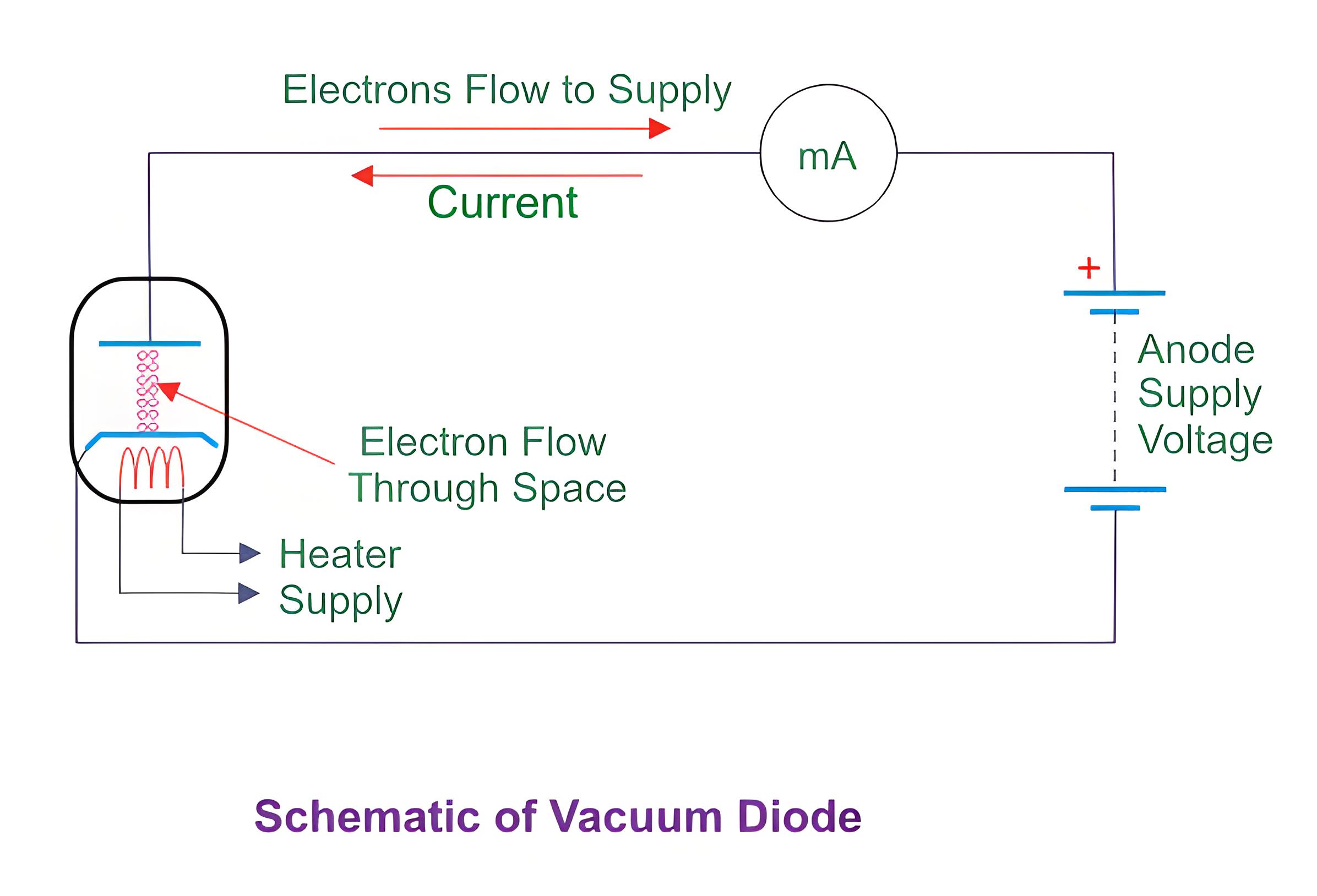
On the other hand, if the anode is made negative with respect to the cathode, there is no electron emission from it as it is cold, not hot. Now, the emitted electrons from the heated cathode do not reach the anode due to the repulsion of the negative anode. A strong space charge will be accumulated between the anode and cathode. Due to this space charge, all further emitted electrons are repelled back to the cathode, and hence no emission takes place. Therefore, no current flows in the circuit. So, vacuum diodes allow current to flow in one direction only: from cathode to anode.
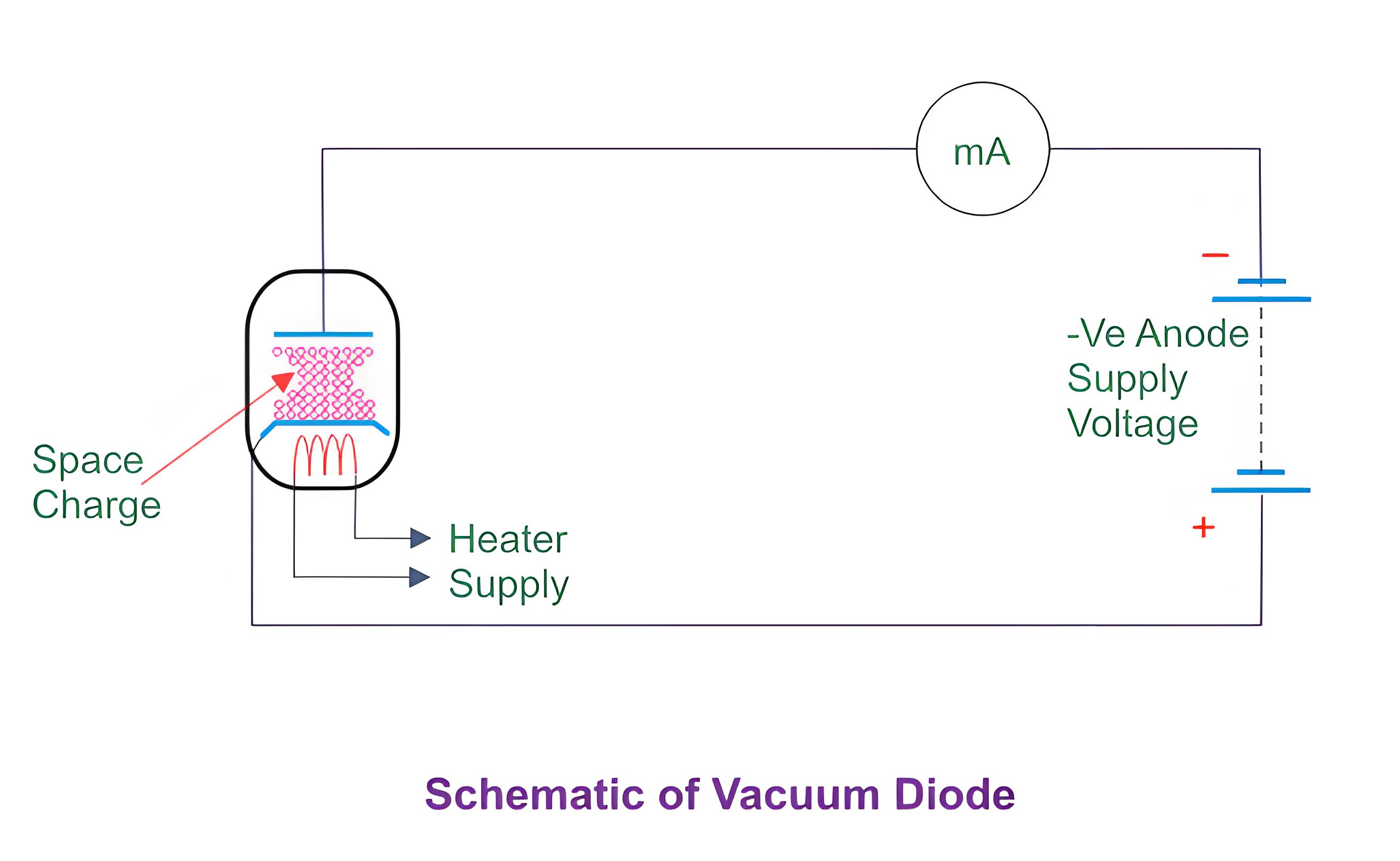
When no voltage is applied to the anode, ideally, there should be no current. However, due to statistical fluctuations in electron velocity, some electrons still reach the anode. This small current is known as splash current.
V-I Characteristics
The V-I characteristics of a vacuum diode show the relationship between the voltage applied across the anode and the cathode (V) and the current flowing through the circuit (I). The V-I characteristics of a vacuum diode are shown below.
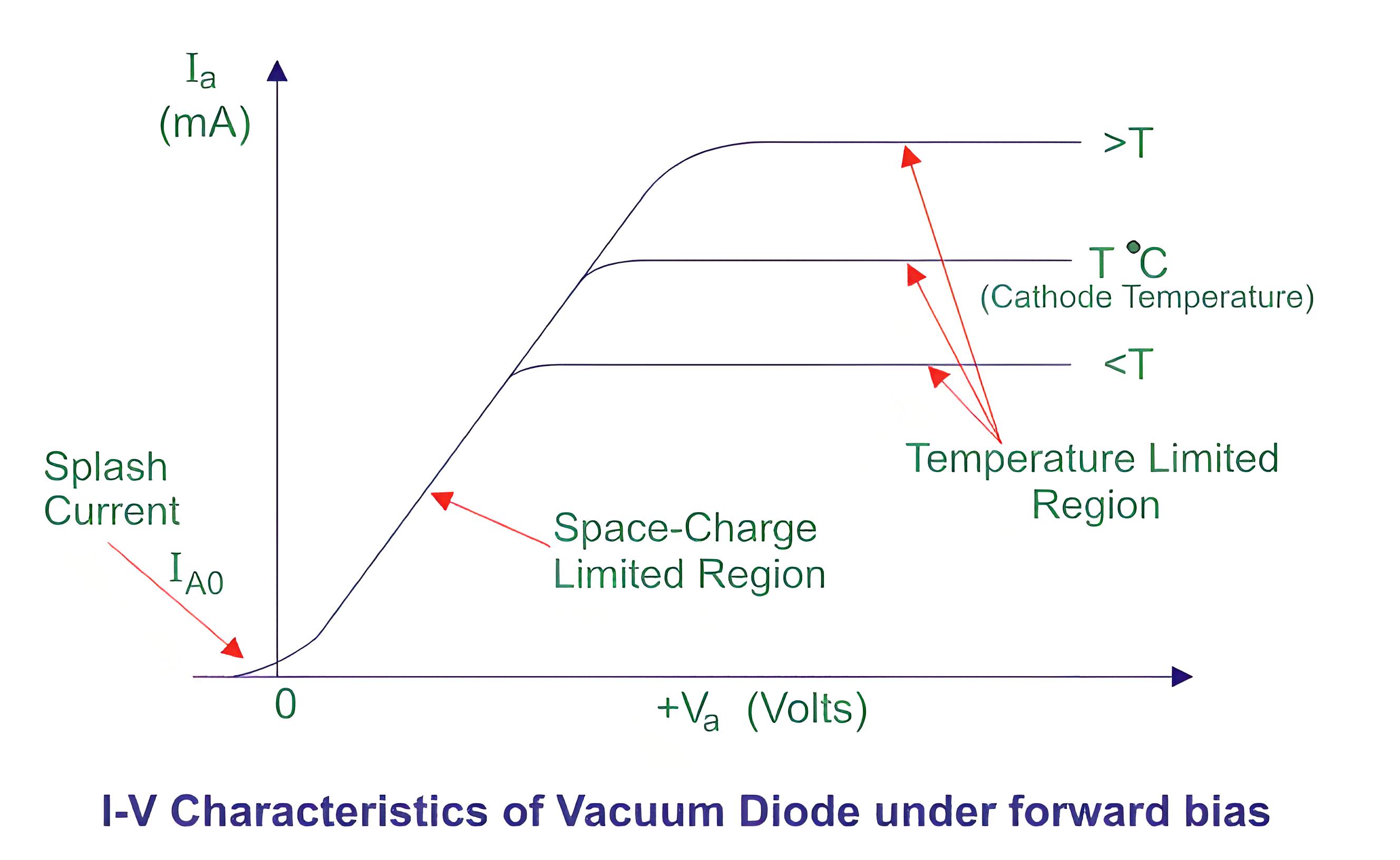
The size of the space charge depends on how many electrons the cathode emits, which is influenced by the cathode’s temperature and work function. The work function is the minimum energy needed to remove an electron from a metal. Metals with lower work functions need less heat to emit electrons, making them more efficient for this purpose.
This region of the characteristics is called the saturation region, as shown in the figure. The saturation current is independent of the anode voltage and depends only on the cathode temperature.
When no voltage is applied to the anode, there should not be any current in the circuit, but in reality, there is a small current due to statistical fluctuations in the velocity of some electrons. Some electrons are energetic enough to reach the anode even when there is no voltage at the anode. The small current caused by this phenomenon is known as a splash current.
Types of Vacuum Diodes
Rectifier diode
Detector diode
Zener diode
Varactor diode
Schottky diode
Applications of Vacuum Diodes
High-power applications
High-frequency applications
High-temperature applications
Audio applications
Conclusion
A vacuum diode is a type of electronic device that controls the flow of electric current in a high vacuum between two electrodes: a cathode and an anode. The cathode emits electrons when heated by a filament or an indirect heater, while the anode collects electrons from the cathode. The vacuum diode works on the principle of thermionic emission and allows current to flow only in one direction: from cathode to anode.
Vacuum diodes were invented by Sir John Ambrose Fleming in 1904 and were widely used in electronics for the first half of the 20th century. They were essential for the development of radio, television, radar, sound recording and reproduction, long-distance telephone networks, and analog and early digital computers. Vacuum diodes have been replaced by semiconductor diodes in most applications, due to their smaller size, lower power consumption, higher reliability, and lower cost. However, vacuum diodes are still used in some areas where they have advantages over solid-state devices, such as high-power, high-frequency, high-temperature, and audio applications.
Vacuum diodes can be classified according to different criteria, such as frequency range, power rating, cathode/filament type, application, specialized parameters, and specialized functions. Some examples of vacuum diode types are rectifier diodes, detector diodes, zener diodes, varactor diodes, and Schottky diodes.
The vacuum diode is a simple but important device that has played a significant role in the history and development of electronics. It is still relevant today for some applications that require its unique characteristics and performance. The vacuum diode is a testament to the ingenuity and innovation of electronic engineers and scientists who have explored the possibilities and potentials of vacuum tubes.
The Electricity Encyclopedia is dedicated to accelerating the dissemination and application of electricity knowledge and adding impetus to the development and innovation of the electricity industry.













